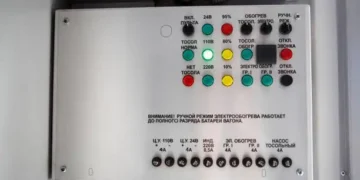When considering a nose job, most people focus on the external aesthetic changes, such as a more defined nasal bridge or correcting a crooked nose. However, an equally important aspect to consider is how the procedure might affect your breathing. For patients in Islamabad who are planning this surgery, it’s essential to understand the functional side of rhinoplasty as well.
Whether you are seeking cosmetic enhancement or need correction for a deviated septum or other nasal obstructions, knowing the potential impact on your airway can help you make an informed decision. This guide will walk you through how Rhinoplasty in Islamabad may affect your breathing and what precautions you should take to ensure a safe and satisfactory outcome.
Understanding the Basics of Rhinoplasty
Rhinoplasty is a surgical procedure performed to reshape the nose. It can be done for:
- Cosmetic reasons: To enhance the appearance of the nose.
- Functional reasons: To improve airflow and correct breathing problems.
In some cases, a combination of both is performed, commonly referred to as functional rhinoplasty.
In Islamabad, rhinoplasty is becoming increasingly common, with clinics offering advanced techniques tailored to the specific needs of each patient.
Can Rhinoplasty Improve Breathing?
Yes—when performed correctly, rhinoplasty can improve breathing, especially if the patient has issues like:
- Deviated septum
- Enlarged turbinates
- Collapsed nasal valves
By restructuring the internal components of the nose, surgeons can enhance airflow and reduce nasal obstruction. This is often achieved through a technique called septoplasty, which may be done alongside rhinoplasty.
How Can Rhinoplasty Cause Breathing Issues?
While rhinoplasty aims to either maintain or improve nasal function, in some cases, breathing problems may develop post-surgery. Here’s how:
1. Over-Resection of Tissue
If too much cartilage or bone is removed, the structural integrity of the nose may be compromised. This can result in nasal valve collapse—a condition that can significantly restrict airflow.
2. Scarring and Adhesions
Internal scar tissue may form abnormally, leading to blockages in the nasal passage.
3. Swelling
Post-operative swelling can temporarily obstruct airflow, although this usually resolves within weeks.
4. Nasal Valve Collapse
This occurs when the internal or external nasal valves weaken or narrow due to surgery. It’s one of the most common reasons patients experience difficulty breathing after rhinoplasty.
Signs Your Breathing May Be Affected
After undergoing rhinoplasty, watch for the following symptoms which may indicate a breathing problem:
- Difficulty breathing through one or both nostrils
- Feeling congested without a cold
- Snoring or disturbed sleep
- Whistling sound while inhaling
- Frequent mouth breathing
If you experience these symptoms beyond the initial recovery period, it’s crucial to consult your surgeon.
Preventing Breathing Complications During Rhinoplasty
An experienced surgeon will take several steps to prevent breathing issues during rhinoplasty, such as:
1. Preoperative Assessment
Your nasal anatomy and airflow are evaluated using techniques like nasal endoscopy or CT scans.
2. Conservative Tissue Removal
Surgeons in Islamabad with expertise in functional rhinoplasty focus on preserving the nasal structure and avoid excessive tissue removal.
3. Reinforcement with Grafts
In cases where support is needed, cartilage grafts are used to strengthen the nasal valves and maintain function.
What If Breathing Issues Occur After Surgery?
If you experience persistent breathing issues after rhinoplasty, several treatment options may help:
- Medications: Steroid nasal sprays or antihistamines to reduce inflammation.
- Nasal strips or internal stents: Temporary measures to open nasal passages.
- Revision rhinoplasty: In severe cases, a corrective surgery may be necessary to restore airflow.
Make sure to keep regular follow-ups with your surgeon during the recovery period to catch any functional issues early.
Cosmetic vs. Functional Goals: Striking the Right Balance
A well-performed rhinoplasty should achieve both aesthetic enhancement and functional preservation. However, when cosmetic goals overshadow functionality, complications can arise.
Many surgeons now use computerized imaging software to show patients how cosmetic changes will look and simulate their impact on nasal function.
Patients in Islamabad are increasingly choosing clinics that specialize in balancing cosmetic desires with functional necessities—a crucial step for safe and effective rhinoplasty.
Importance of Surgeon Experience and Technique
The outcome of your rhinoplasty—particularly as it relates to breathing—largely depends on the surgeon’s:
- Training in facial plastic surgery
- Experience with functional rhinoplasty techniques
- Understanding of nasal anatomy
Choosing a qualified professional with a track record in both aesthetic and functional results is vital. This ensures that your breathing is not only preserved but possibly improved.
What to Expect During Recovery
During the first few weeks after rhinoplasty, you may feel congested and find breathing through your nose difficult. This is normal and expected due to:
- Swelling of the internal nasal tissues
- Dryness and crusting inside the nostrils
- Presence of splints or dressings
Tips for easier breathing during recovery include:
- Use of saline nasal sprays (as prescribed)
- Sleeping with your head elevated
- Avoiding strenuous activities
Recovery typically takes 2-4 weeks for breathing to return to normal, but full internal healing may take several months.
Patient Testimonials from Islamabad
Many individuals in Islamabad have undergone rhinoplasty and shared positive feedback, not just about how their nose looks, but how much better they can breathe. Some patients reported:
- Less nasal congestion
- Improved sleep quality
- Easier exercise due to better airflow
These results are particularly common among patients who had structural nasal issues corrected during their rhinoplasty.
Conclusion: Your Health Comes First
While rhinoplasty can certainly improve both form and function, it’s essential to be aware of how it might impact your breathing. By selecting an experienced surgeon and clearly communicating your needs, you can achieve results that are not only aesthetically pleasing but also supportive of optimal nasal function.
If you’re considering rhinoplasty and want expert advice tailored to both cosmetic and functional outcomes, consult with the trusted professionals at Dynamic Clinic in Islamabad. Their team is known for a balanced approach that ensures long-lasting, natural-looking results while prioritizing your overall nasal health.



























